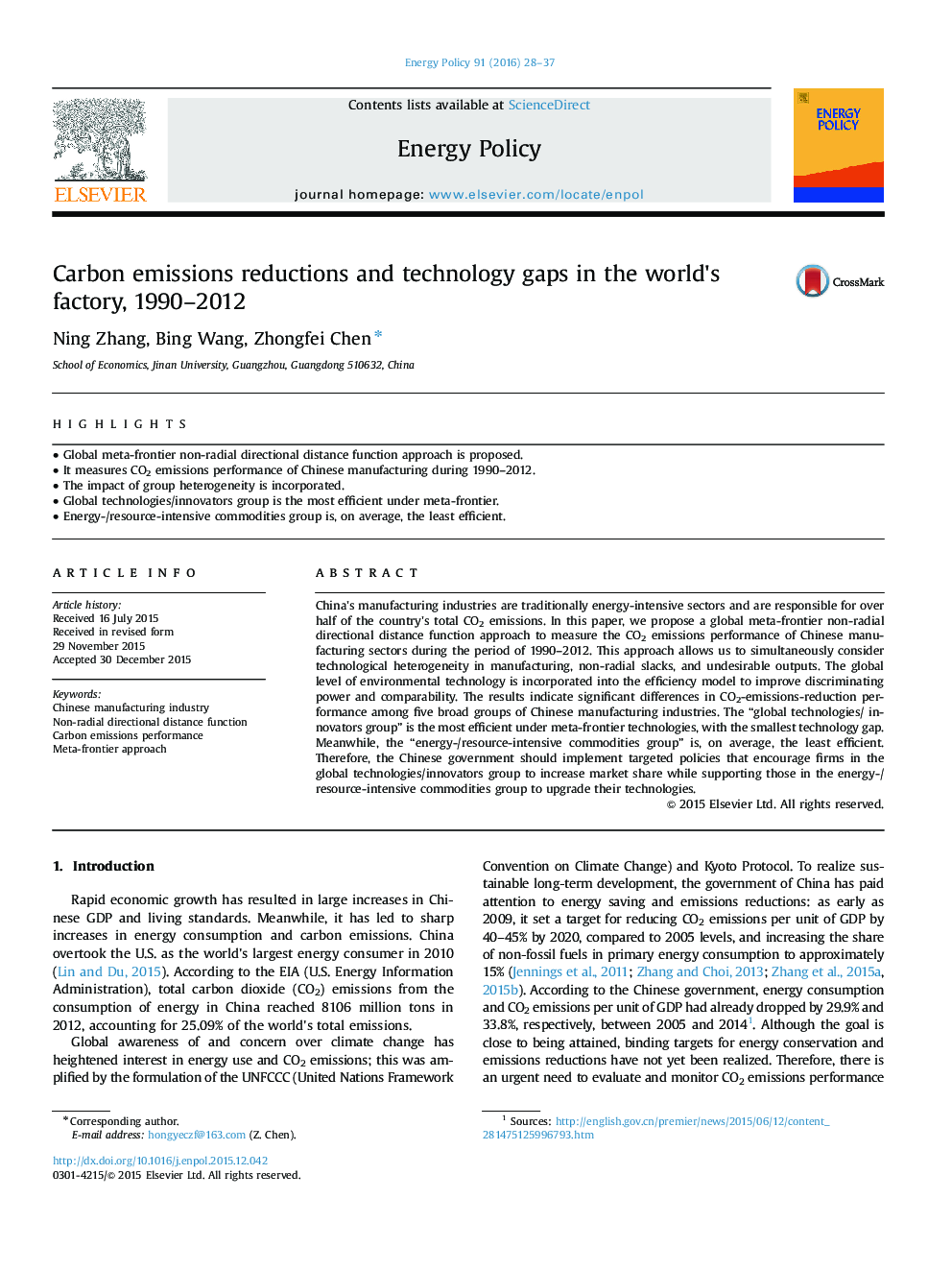| Article ID | Journal | Published Year | Pages | File Type |
|---|---|---|---|---|
| 7399793 | Energy Policy | 2016 | 10 Pages |
Abstract
China's manufacturing industries are traditionally energy-intensive sectors and are responsible for over half of the country's total CO2 emissions. In this paper, we propose a global meta-frontier non-radial directional distance function approach to measure the CO2 emissions performance of Chinese manufacturing sectors during the period of 1990-2012. This approach allows us to simultaneously consider technological heterogeneity in manufacturing, non-radial slacks, and undesirable outputs. The global level of environmental technology is incorporated into the efficiency model to improve discriminating power and comparability. The results indicate significant differences in CO2-emissions-reduction performance among five broad groups of Chinese manufacturing industries. The “global technologies/ innovators group” is the most efficient under meta-frontier technologies, with the smallest technology gap. Meanwhile, the “energy-/resource-intensive commodities group” is, on average, the least efficient. Therefore, the Chinese government should implement targeted policies that encourage firms in the global technologies/innovators group to increase market share while supporting those in the energy-/resource-intensive commodities group to upgrade their technologies.
Related Topics
Physical Sciences and Engineering
Energy
Energy Engineering and Power Technology
Authors
Ning Zhang, Bing Wang, Zhongfei Chen,
